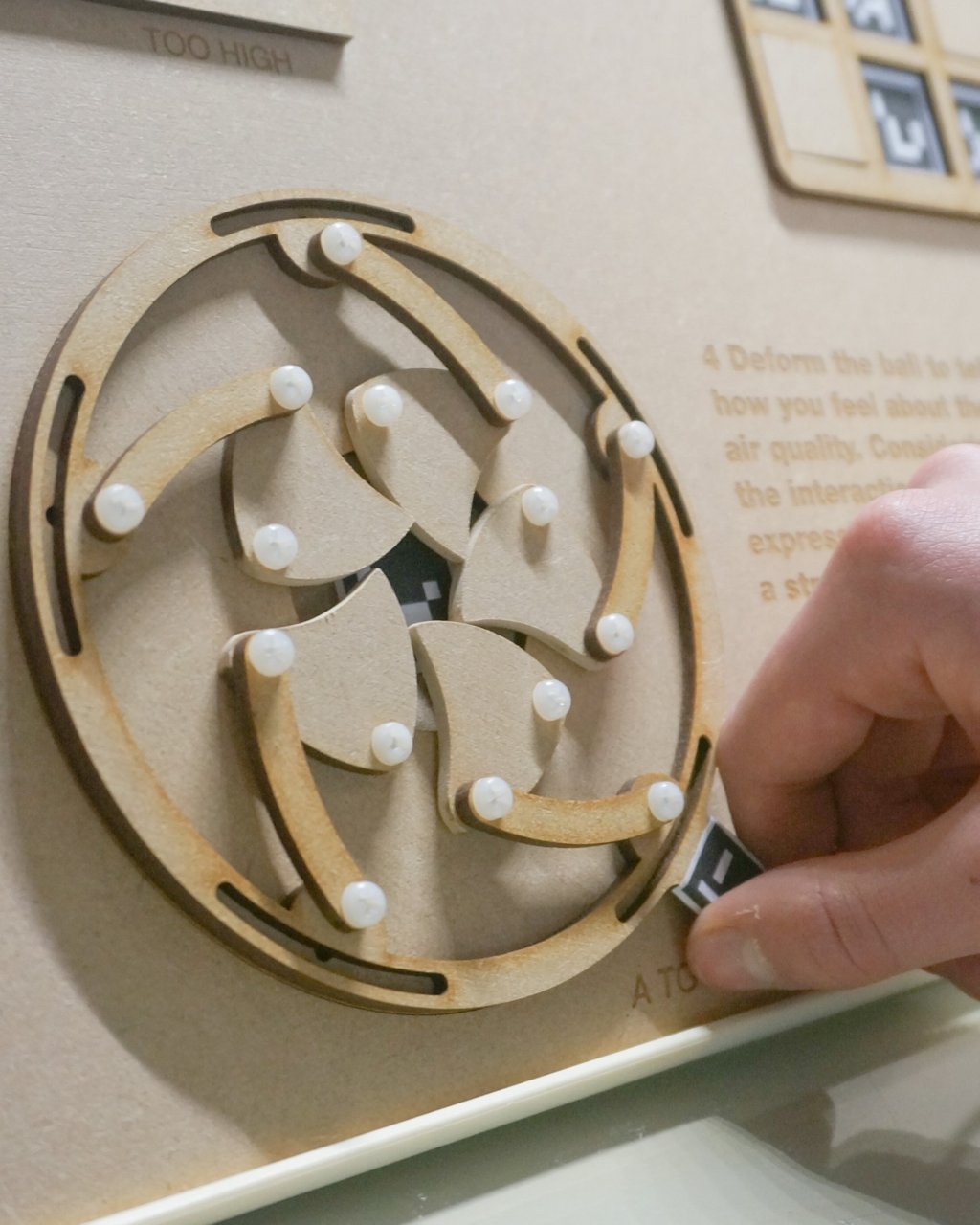Yinying Miao, Steven Houben, Rong-Hao Liang
We often relate office wellbeing to how physically active we are and how we socially connect to our co-workers. We tend to prioritise our needs and wishes, with less or little attention being paid to environmental factors.
Smart office building systems are increasingly unlocking the opportunity for us to understand our office environments through unobtrusive data collection. These data are often used for spatial planning and are commonly available to office workers. Recent office well-being research shows that the need is greater than simply providing objective data to office workers, it's important to invite them to provide inputs and draw their subjective reflections.
How noticeable are those environmental factors in your office space?
OfficeSphere is a tangible tool that allows office workers to explore their thoughts and feelings about the office environment. It consists of an input data physicalization for interactions and an output physicalization for feedback.
Office workers are invited to interact with the input tool to express their thoughts and draw personal reflections about the office environment – sliders for temperature and humidity; square blocks to be filled for light intensity; rotatable IRIS mechanism to demonstrate noise levels; and covering areas to express their feelings about air quality.
The output physicalization of OfficeSphere represents the collective responses from all the office workers. The temperature and humidity data are represented by warm and cold colour differences; the speed of blinking light shows concerns about air quality levels; the brightness of light corresponds to the perceived brightness in the office; and finally, vibration sounds represent the noise levels.
Based on a preliminary lab study with 20 participants, OfficeSphere showed potential by integrating into everyday office contexts and usage. Our study also shows that OfficeSphere can act as a relaxing tool for break-time activities. OfficeSphere lowers the threshold for creating a better shared understanding of the shared office environment, which can eventually lead to possible improvements to office environmental comfort supporting day-to-day work experiences.
By using emerging technology like CV markers, OfficeSphere makes the invisible, and sometimes ignorable feelings, emotions, and thoughts around the office environment more tangible and approachable for the office workers to feel, reflect, and share. Further research could dive into a more unobtrusive experience and examine everyday contexts.



